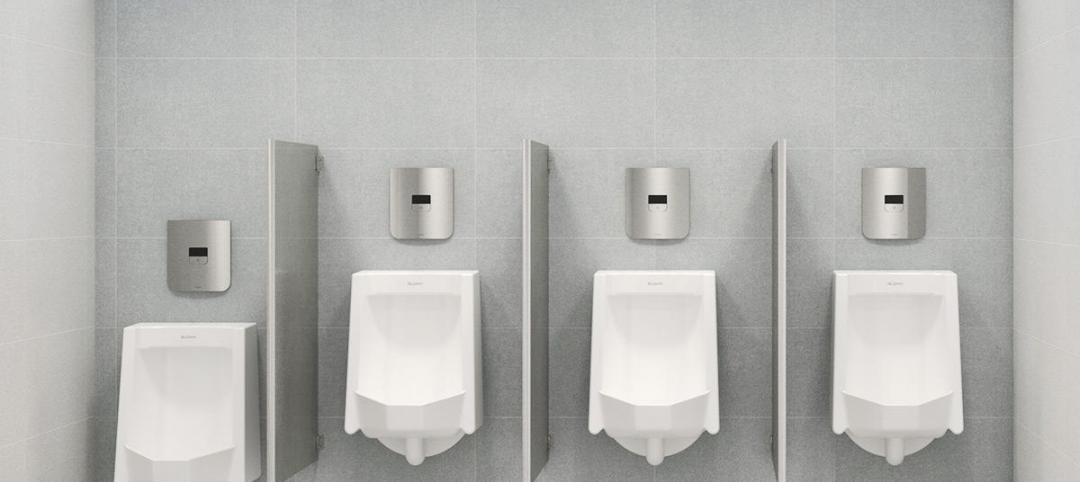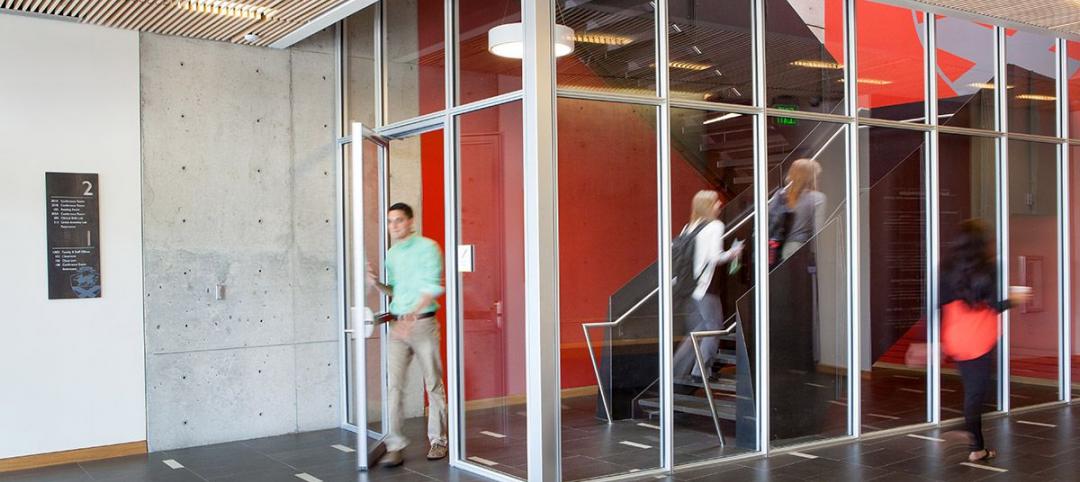|
In 2010, the AIA/NCARB Internship and Career Survey of emerging professionals took a snapshot of young designers during a time ofintense economic contraction, when they were often the first to suffer. But in the two years since, emerging professionals have begun experiencing a rebound, with higher employment levels, more young designers getting licensed, and any remaining unemployment becoming, in most cases, mercifully short. The 2012 Internship and Career Survey, commissioned jointly by the AIA and NCARB, and conducted by The Rickinson Group, contains a wealth of information on the experiences of emerging professionals as they go through IDP, take the ARE, become licensed, and obtain their first jobs. This survey has been completed five times since 2003, most recently inthe fourth quarter of 2012. Path to licensure: IDP and ARE The survey found that there has been little change in the length of time required to complete IDP over the last five years, with nearly two-thirds of respondents (62 percent) in 2012 reporting that it took them three to five years to complete. In addition, the majority of interns who have not yet completed IDP anticipate that it will take the same amount of time (55 percent). Twenty percent of those who haven’t yet started IDP think it will take them less than three years to complete; in contrast, only 13 of those who have already completed IDP reported that it took less than three years to complete. And just over half of respondents said that they were able to complete all 17 NCARB experience-area requirements at one firm, up 4 percentage points from 2010 and up 8 percentage points from 2005. Nearly 60 percent of survey respondents indicated that they have taken at least some divisions of the ARE, with the most commonly cited motivations for taking the exam being career enhancement (83 percent), personal goal fulfillment (80 percent), competitive advantage in the down economy (63 percent), and a slim majority citing competitive advantage in their firm. Forty percent of interns currently taking the ARE are taking it concurrently with IDP, an increase of 3 percentage points from 2010. In addition, female and younger interns are also more likely to be taking the two concurrently, as are interns on a traditional career path. Just over two-thirds of interns anticipate that it will take them one to four years to complete the ARE, comparable to the share of respondents who reported that it did indeed take that long. For the 41 percent of respondents who have not yet started or do not plan to ever take the ARE, the most commonly cited reasons for not doing so were a lack of time to prepare (56 percent) and cost (54 percent). Seven in 10 survey respondents reported that they intend to become licensed. This is down substantially from 2010, when 83 percent indicated that they planned to obtain licensure, because a larger share of interns are already licensed. (Twenty-five percent of interns were licensed in 2012, as compared to only 11 percent in 2010). The share of respondents who say that they do not intend to become licensed is unchanged from previous editions of the survey, at just 5 percent. Employment levels rising As in past versions of the survey, the vast majority of respondents in 2012 reported that they have already sought their first professional architecture position. And more than three quarters of respondents (78 percent) reported that they were currently engaged in professional architecture work, a notable 8 percent increase from 2010. In addition, just 6 percent reported that they were not currently employed, in contrast to 17 percent two years ago. Respondents also rated the many factors that went into selection of their place of employment, with the top three consisting of opportunities for growth (rated as important by 76 percent of respondents), location, and level of responsibility. Personal/family considerations were more important to respondents who were over 30, while location and reputation of the firm were more important to recently licensed architects. For respondents not currently working in a professional architecture position, the top two reasons were that they were laid off from their previous job (36 percent) and that the path to licensure is too long/difficult (35 percent). While just over half of respondents indicated that they have been laid off in the past, the duration of unemployment after the layoff has declined dramatically in the last two years. In 2010, only 52 percent were able to find a new job in a year or less; last year 64 percent reported that unemployment lasted 12 months or less. Just 14 percent said that they still haven’t found another job, less than half of the rate from two years ago. In addition, nearly seven in 10 respondents who left positions due to layoffs or other economic concerns think they are likely to remain in the architecture profession. Many firms offer interns support as they work to complete the ARE. The most common services include a firm-maintained library of study materials, firm payment of ARE fees, and paid time off to take the ARE. Approximately one-third of firms offer at least one of each. The vast majority of interns think that paid ARE fees are important forms of monetary support their firm can provide, along with a raise upon licensure, and paid professional organization dues. Overall, the most effective incentives to becoming registered are a salary increase, a bonus upon registration, and a bonus upon completion of the ARE. While 60 percent of respondents rated compensation as worse than they had anticipated, the majority has found that professional satisfaction with work, the type of work they’re doing, and hours worked are the same as or better than they had expected. This survey received 10,003 usable responses; 41 percent of respondents were women, 37 percent under age 30, and an additional 29 percent between ages 30–34. |
||
(http://www.aia.org/practicing/AIAB098254?mid=1298826&rid=14899235&cid=ITTestCampaign&sid=LyrisListManager&lid=aiarchitect-nonmembers)
Related Stories
75 Top Building Products | Dec 16, 2019
101 Top Products for 2019
Building Design+Construction readers and editors select their top building products for the past 12 months in the fourth-annual 101 Top Products report.
75 Top Building Products | Dec 16, 2019
Top Plumbing Products for 2019
Sloan's CX Flushometer and Zip Water's HydroTap are among the eight plumbing products to make Building Design+Construction's 2019 101 Top Products report.
75 Top Building Products | Dec 16, 2019
Top Interior Building Products for 2019
Arktura's Delta Drop ceiling and CertainTeed's Decoustics Rondolo wood panels are among the 13 new interior products to make Building Design+Construction's 2019 101 Top Products report.
75 Top Building Products | Dec 16, 2019
Top Glass and Glazing Products for 2019
SageGlass's Harmony dynamic glass and Vitro Architectural Glass's Acuity low-iron glass are among the nine new glass and glazing products to make Building Design+Construction's 2019 101 Top Products report.
75 Top Building Products | Dec 16, 2019
Top Flooring Products for 2019
Tarkett’s aviation-inspired flooring collection and J+J Flooring’s textile composite flooring are among the four new commercial flooring products to make Building Design+Construction’s 2019 101 Top Products report.
75 Top Building Products | Dec 16, 2019
Top Building Systems Products for 2019
FabricAir’s ceiling-hung fabric duct and Ellumi Lighting’s bacteria-killing lights are among the 13 new building systems products to make Building Design+Construction's 2019 101 Top Products report.
75 Top Building Products | Dec 12, 2019
Top Building Envelope Products for 2019
Sto's beetle-inspired exterior coating and Dörken Systems' UV-resistant vapor-permeable barrier are among the 28 new building envelope products to make Building Design+Construction's 2019 101 Top Products report.
Architects | Dec 10, 2019
Calling all emerging architects: Enter to win the $20,000 Forge Prize
This annual steel design competition will recognize three Finalists ($10,000 each) and one Grand Prize Winner ($20,000 total) for their novel concepts in steel-based structures. Entries are due Jan. 15, 2020.
Architects | Dec 9, 2019
Jonathan Moody promoted to CEO of Moody Nolan
New four-member Executive Team also named.
Big Data | Dec 4, 2019
AEC data's coming out party
AEC firms are finally putting to use project information they’ve been storing in their computers for years.



















